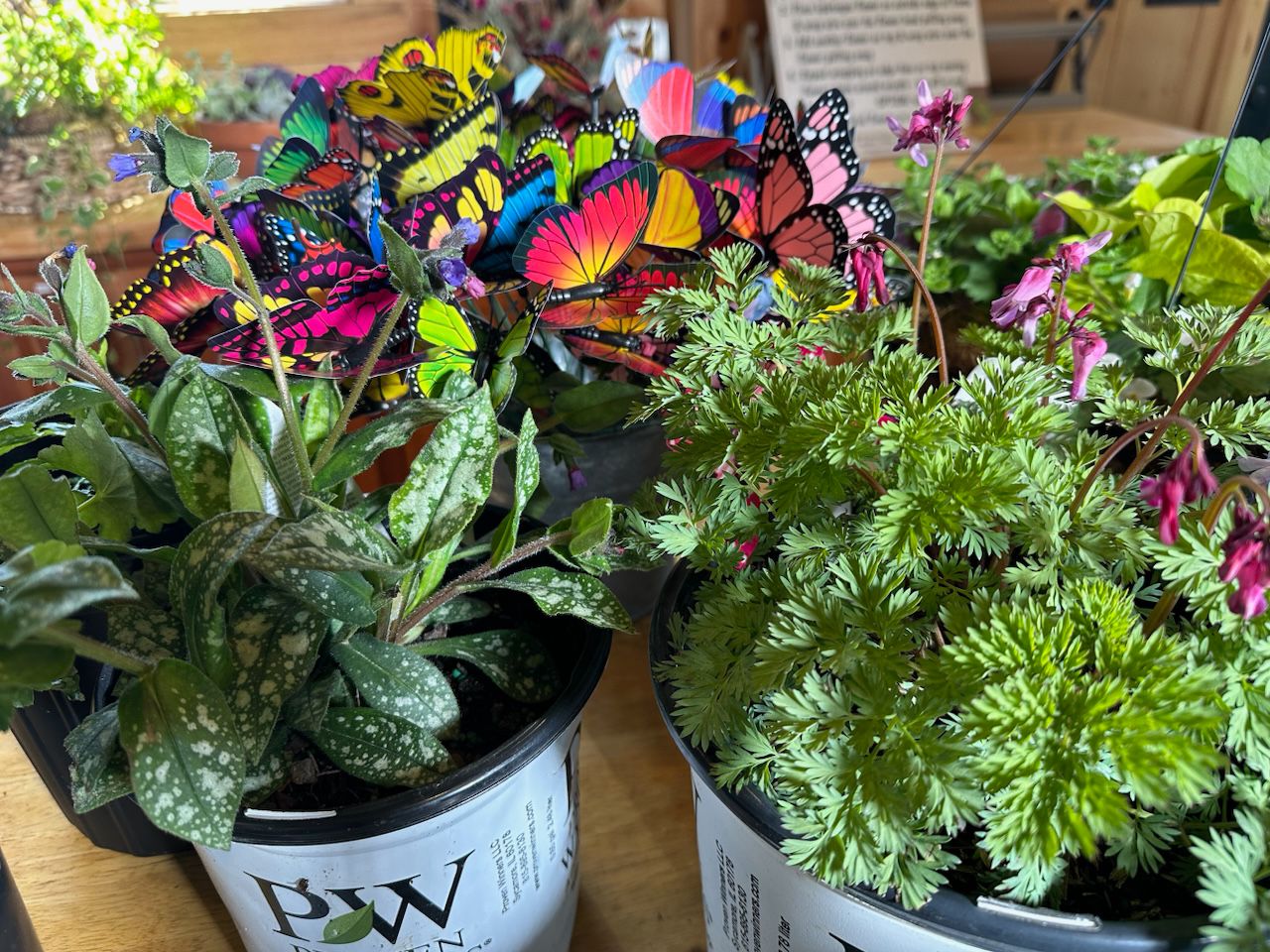- theThylakoid
- Posts
- Goeppertia makoyana, no longer a calathea
Goeppertia makoyana, no longer a calathea
plus: senescence, butterfly gardens, North American biodiversity hotspot discussion, and non-browning avocados
Hey planty plant, ready to ✨photosynthesize✨?
In this article:
🌱 Botanic Spotlight: Goeppertia makoyana
🌱 Plant Insight: senescence, let your leaves yellow
🌱 Plants to attract butterflies
🌱 Podcast of a biodiversity hotspot in North America
🌱 Non-browning avocados!
Botanic Spotlight
Goeppertia makoyana, formerly Calathea makoyana, is a popular interior design plant known for its striking leaf design and active prayer-like (nyctinastic) leaf movements - opening up during the day and closing at night. Let’s be real, it’s an annoying and fussy plant to grow, but maybe that’s because the growing conditions are not well understood. Hint: check the humidity and water source. If you’re up for some Real Housewives of Nature drama, G. makoyana might be the plant for you.
Overview
Common Names: cathedral windows and prayer plant
Native to eastern Brazil understory forests.
Lighting: low-light to bright, indirect light
Humidity: high
Soil Conditions: well-draining, moist, not waterlogged, and salt sensitive
Office-Friendly: Yes
Pet-Friendly: Nontoxic
Invasiveness: Noninvasive
Typical Propagation: Separation
Phylogeny (Borchsenius et al. 2012 & Christenhusz et al. 2017)
Order: Zingiberales | giant herbs, leaves that are rolled up in a bud + distinct petiole and a sheathing base that in many cases forms or clasps a pseudostem
Family: Marantaceae | prayer-plant family
Genus: Goeppertia | still likely polyphyletic! expect future reclassification 🫠
Species: makoyana
Architecture (Gilman, Klein, and Hansen 2022)
Leaves
Attachment | petiolate
Leaf blade | ovate
Leaf margin | entire
Leaf apex | obtuse
Leaf venation | pinnate
Flowers
Monoecious, bisexual (singular plant contains male and female flowers)
Charles Jacques Édouard Morren (1833-1929), a Belgian botanist, first described G. makoyana. He primarily specialized on plants of the Bromeliaceae family which includes the glorious pineapple and bromeliads.
If you decide to work with this fussy plant, let us know how it goes!
Reply directly to this e-mail.
Plant Insight
Senescence
Plant senescence is nature's nutrient recycling program, working its magic as plants develop and age. When a leaf or a flower has done its job, plant tissue breaks down and reclaim valuable nutrients - such as NPK, iron, and zinc.
On a cellular level, cells begin to change their metabolism, switch off growth processes, and activate a path to their own demise. This isn't just a decline but a strategic move, ensuring resources are conserved and redirected to new growth. Research in plants like Arabidopsis have helped to uncover the genetic script that plants follow to ensure their longevity, turning what seems like an end into a new beginning for other parts of the plant.
It’s a survival strategy to make the most of what’s available! So think twice before snipping a leaf that has begun to yellow. It could just be part of its normal processes and not a disease!

Arabidopsis senescence. Modified from Zentgraf et al. 2021.
Gardening
There are so many ways to design a garden. It can be purely ornamental, medicinal, or even vegetable focused. Here’s one to consider. A butterfly garden focused on attracted and promoting butterflies with perennials and annuals. Here’s a short 4 minute video to check out.
Conservation
If you haven’t heard of the In Defense of Plants podcast, you’re missing out on some great plant content. Conservation can be pretty heavy in politics, but sometimes it’s great to just enjoy the biodiversity. In this podcast, you can join conservation biologist Sara Johnson and Matt Candeias as they discuss a North American biodiversity hotspot.
AgBiotech
Browning avocado may become a thing of the past. Typically, avocado begins to brown when exposed to oxygen due to polyphenol oxidases (PPO) catalyzing the oxidation of phenolic compounds into quinones. The polymerization of quinones produces the visible browning in avocados - and many other fruits. Here, GreenVenus knocks out genes that encode the PPO like causing a reduction in quinone production ultimately elongating the timing to browning. They likely still have a long way to go till market.
Everything on the Earth has a purpose, every disease an herb to cure it, and every person a mission.
Suggest the next plant for the botanic spotlight by replying directly to this e-mail.
How’s the glucose? Share the goods with others looking to ✨photosynthesize✨!



